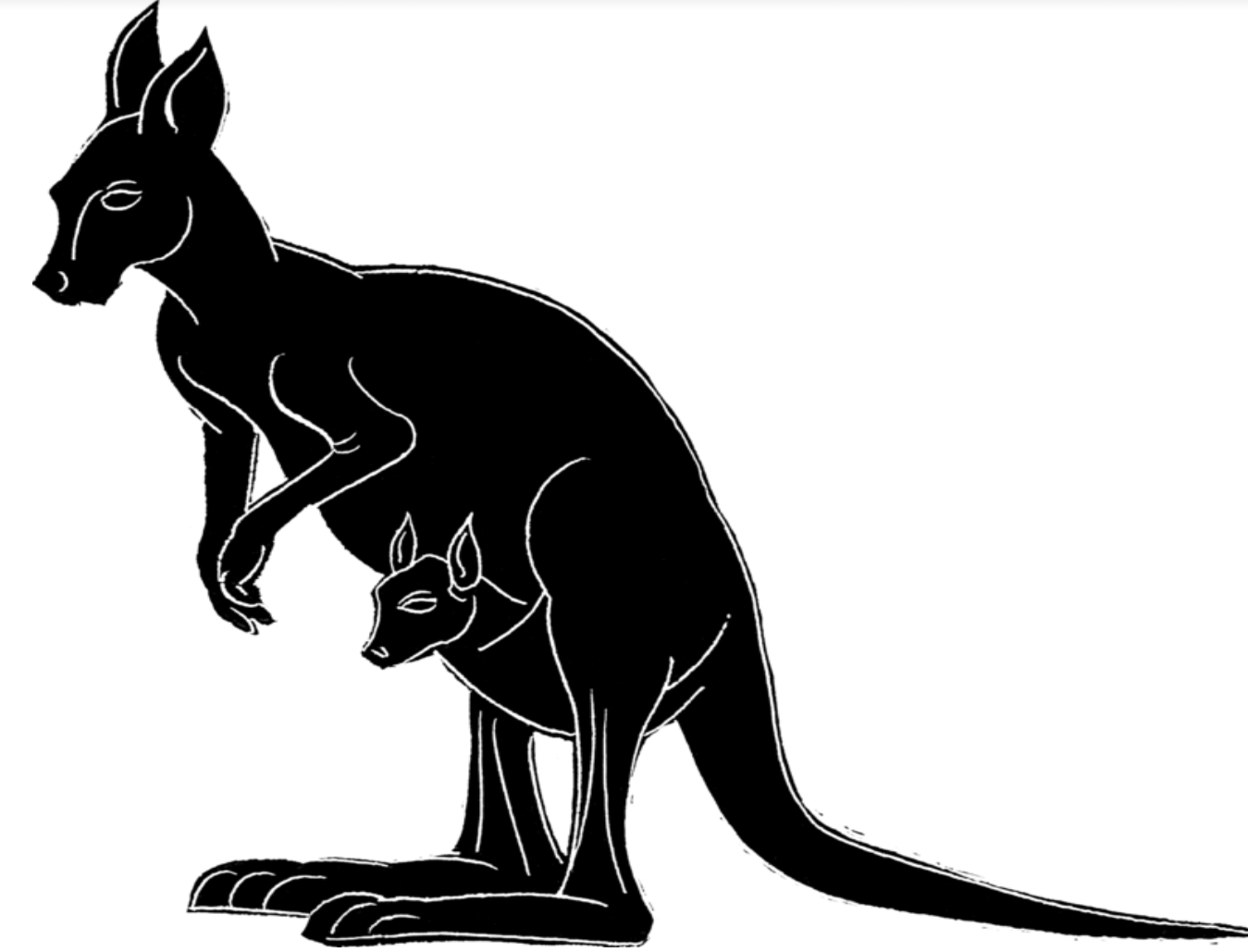
A kangaroo moves around by leaping with its strong hind legs.When moving its thick strong tail helps it to

A. Defend against enemies
B. Maintain balance
C. Have a firm grip on branches
D. Catch food on its way

Answer
468.6k+ views
Hint: Kangaroos have powerful hind legs, long, sturdy tails, and short front legs. The kangaroos belong to the Macropus family of animals, literally "big foot." Thanks to their large legs, the kangaroos can hop some 30 feet (9 metres) in one bound and fly more than 30 miles (48 kilometres ) per hour.
Complete Answer:
- When jumping, kangaroos use their strong tails for balance. They are the tallest of all marsupials, taller than 2 metres (6 feet). In Eastern Australia, kangaroos live. They live in small groups ('Mobs' by the Australians) called troops or herds, usually made up of 50 or more animals. The kangaroos will pound the ground with their strong feet in alarm if attacked. Kangaroo fighting is kicking opponents, and sometimes biting.
- To cradle baby kangaroos called joeys, female kangaroos carry a pouch on their belly made of a fold in the skin. At birth, or around the size of a grape, newborn raisins are just one inch long (2.5 centimetres).
- When in their lowered grazing role, rather than using their legs, red kangaroos use their tails and forelimbs to raise themselves off the ground as they chew their way through grasslands — comparable to having two legs on a skateboard and a third leg with which to drive forward. But what is much more remarkable is the individual strength of the tail as its own limb, and not just its use as a crutch for walking.
Their tails are more than 20 vertebrae, taking the place of our foot, calf, and thigh.
The correct answer is option(B) Maintain balance.
Note: The propulsive force created by the tail rivals that of the combined front and hind limbs, and the work done by the tail probably helps the animal save energy as it travels between tasty plant patches.
Complete Answer:
- When jumping, kangaroos use their strong tails for balance. They are the tallest of all marsupials, taller than 2 metres (6 feet). In Eastern Australia, kangaroos live. They live in small groups ('Mobs' by the Australians) called troops or herds, usually made up of 50 or more animals. The kangaroos will pound the ground with their strong feet in alarm if attacked. Kangaroo fighting is kicking opponents, and sometimes biting.
- To cradle baby kangaroos called joeys, female kangaroos carry a pouch on their belly made of a fold in the skin. At birth, or around the size of a grape, newborn raisins are just one inch long (2.5 centimetres).
- When in their lowered grazing role, rather than using their legs, red kangaroos use their tails and forelimbs to raise themselves off the ground as they chew their way through grasslands — comparable to having two legs on a skateboard and a third leg with which to drive forward. But what is much more remarkable is the individual strength of the tail as its own limb, and not just its use as a crutch for walking.
Their tails are more than 20 vertebrae, taking the place of our foot, calf, and thigh.
The correct answer is option(B) Maintain balance.
Note: The propulsive force created by the tail rivals that of the combined front and hind limbs, and the work done by the tail probably helps the animal save energy as it travels between tasty plant patches.
Recently Updated Pages
The correct geometry and hybridization for XeF4 are class 11 chemistry CBSE

Water softening by Clarks process uses ACalcium bicarbonate class 11 chemistry CBSE

With reference to graphite and diamond which of the class 11 chemistry CBSE

A certain household has consumed 250 units of energy class 11 physics CBSE

The lightest metal known is A beryllium B lithium C class 11 chemistry CBSE

What is the formula mass of the iodine molecule class 11 chemistry CBSE

Trending doubts
The reservoir of dam is called Govind Sagar A Jayakwadi class 11 social science CBSE

10 examples of friction in our daily life

What problem did Carter face when he reached the mummy class 11 english CBSE

Difference Between Prokaryotic Cells and Eukaryotic Cells

State and prove Bernoullis theorem class 11 physics CBSE

Proton was discovered by A Thomson B Rutherford C Chadwick class 11 chemistry CBSE




